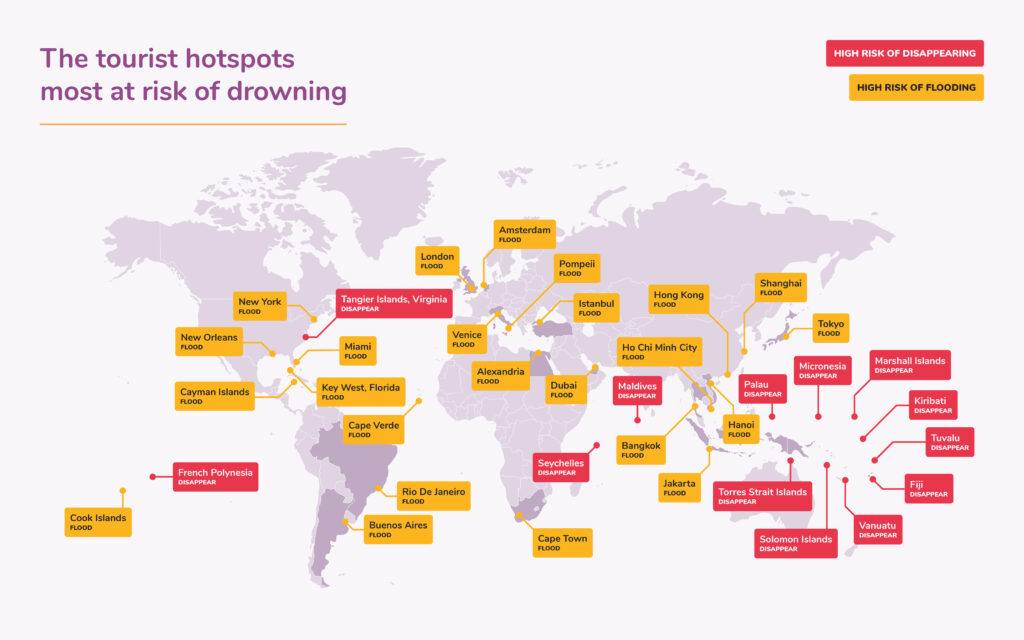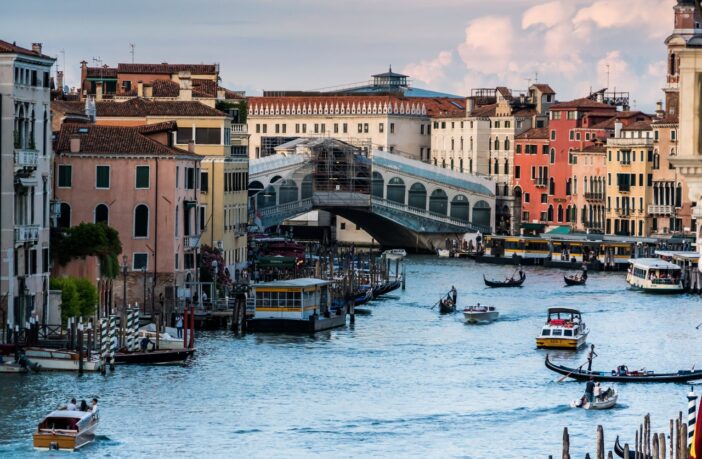One of the most notable impact of climate change is going to be a rise in sea level. This week it was announced that sea levels will rise an extra 25% on top of the IPCC’s original prediction of 0.43m to 0.84m, by 2100.
If the world does not start to hit its carbon emission reduction targets then some of the planet’s most famous tourist destinations could be under threat., For some it could result in a major restructuring of how the city is built, others could find that they are in a constant battle to keep the city dry.
This is a process that is already happening. Fiji, a country where the economy is largely based on tourism, has already started to see the effects of rising sea levels with research showing that it will continue to rise to 1-2 metres by 2100, which risks the island being submerged completely. Seychelles, Solomon Islands and Palau are all also at risk of disappearing by 2100.
In the UK London, at least one million people live in the natural floodplain with 16% of the city’s properties at significant risk to sea levels rising.
But which places are most at risk?
Hong Kong attracts approximately 56 million tourists every year according to Statista, and is facing a sea-level rise of 0.6-1.3m rise by 2100. This could have devastating effects on 8.4 million vulnerable residents in low-lying areas who would be exposed to extreme flooding.
The Maldives is extremely vulnerable to rising sea levels. As one of the flattest countries in the world, even the smallest change in sea level could cause harm. Currently, 80% of the island is only one metre above sea level, and it’s estimated that by 2100, 77% of the Maldives land area could be underwater.
New York currently has the largest population living inside a floodplain. And with sea levels predicted to rise by as much as six feet by 2100, this could potentially become a very dangerous place to be, especially in low-lying parts of the city such as Brooklyn and Queens.
For many years people have said that Venice is sinking, and now, with the acceleration of global warming, we could lose this ancient and iconic city sooner than we thought. With the sea level estimated to rise by 1.04m by 2100, it’s likely Venice will see extreme flooding every five years by 2050 and every five months by 2100.
The impact of rising sea levels can be catastrophic to our planet, causing the world to look very different by 2100. And while it seems like an inevitable movement, reducing your carbon footprint and switching energy to suppliers using renewable sources can help to slow down the rising levels, giving the cities most likely to be affected time to plan and prepare.





